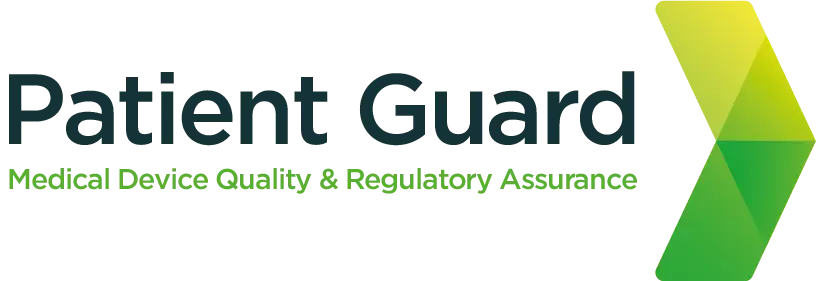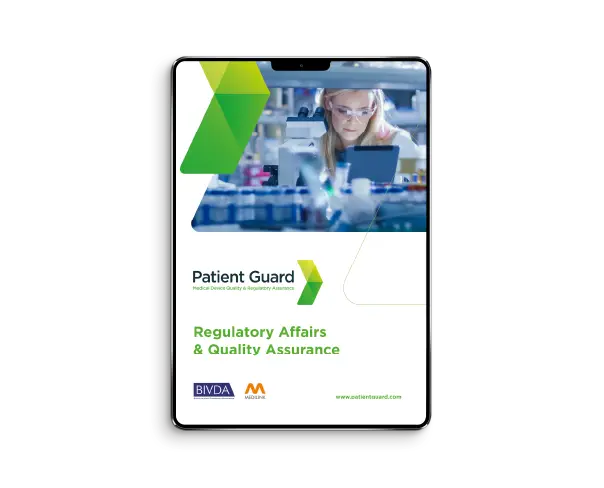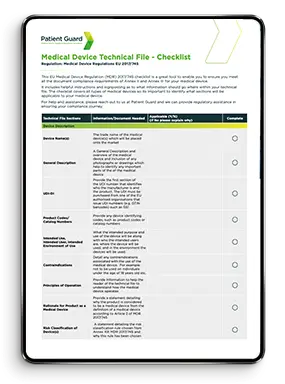Introduction
Is my Product a Medical Device? Is a common question asked When developing a new and exciting product. It can be hard to know if it might fall under specific regulations. This is usually the case with medical devices. The medical device industry is highly regulated worldwide. These regulations have specific criteria that determines if a product falls under the definition of a medical device. Therefore it is really important to evaluate your product to see if it might be in the scope of these medical device definitions for the regulation of the countries in which you wish to sell the product in.
Medical Device Regulations
USA
In the USA, medical devices are regulated by law under the Code of Feral Regulations (CFR) part 21. The Food and Drug Administration (FDA) has the responsibility to ensure that medical device products adhere to the CFR before they are placed on the USA market, and also to monitor the safety and effectiveness of these medical devices whilst they are being used in the USA.
Europe
The medical device regulations in Europe cover all of the EU and other countries that accept EU CE marking. This makes the EU the biggest Medical Device Market after the USA. In the EU there are two medical device regulations one that covers medical devices known as the EU Medical Device Regulations (MDR) 2017/745 and one that covers In Vitro Diagnostic Devices (IVDs) known as the EU Invitro Diagnostic Regulations (IVDR) 2017/746.
The importance of Medical Device Determination
A key question that is often asked is, “Is my product a medical device?.” An important distinction as this classification has significant implications for market access, safety standards, and compliance.
Placing a product on the market which is considered to be a medical device without complying to the relevant medical device regulations can land you in serious legal trouble, and likely the removal and forbiddance of the product from being allowed to be sold.
This could have a large cost to the business. Therefore, it is of paramount importance to check that if you product might be a medical device before placing it on a market.
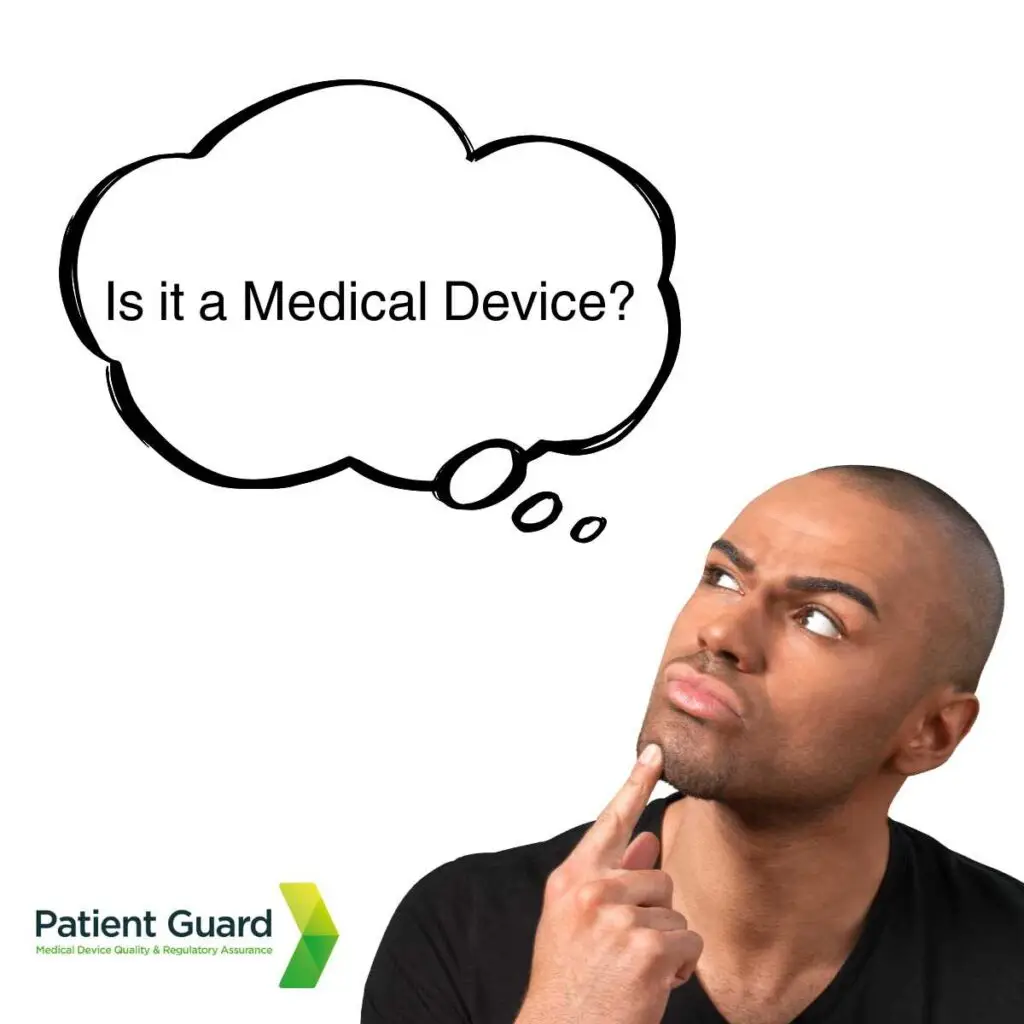
Defining a Medical Device
FDA
The U.S. Food and Drug Administration (FDA) operate a system based on predicate devices. This means that if there is a product similar in nature to the product you intend to sell, and the product is listed on the FDA medical device classification database, then your product will be a medical device. If the product is brand new and there are no predicate devices but you think the product could potentially be a medical device, then you need to seek the opinion of the FDA.
European Union
The European Medicines Agency (EMA) define a medical device as any tool intended for diagnosing, curing, mitigating, treating, or preventing disease that does not rely on chemical action within the body. This broad definition includes instruments, software, implants, and more. The definition of a medical device or IVD is given in the MDR 2017/745 and the IVDR 2017/746 under article 2.
Product Claims
A significant portion of whether a product could be determined as a medical device lays with the product marketing claims.
What you claim a product does will determine it. This is known as the devices intended use, and if that intended use falls within the definition of the EU medical device regulations then it is likely it will be considered to be a medical device.
Example - A Skin Cream
A skin cream is a good example of a product that could fall into three different categories. A skin cream with the same formula but different marketing claims could potentially be a Cosmetic, Medical Device or Medicinal Product:
Is my product a Cosmetic?
If you claim a the skin cream is to moisturise dry skin, then the product would most likely fall under the cosmetic regulations.
Is my Product a Medical Device?
If you claim the skin cream is to alleviate dry skin caused by eczema (or other skin condition) then it is likely that the product would fall under the definition of the medical device regulations.
Is my Product a Medicinal Product?
If you claim that the skin cream is used to treat eczema (or other skin condition) then it is likely that the product will fall under the definition of the medicinal product regulations.
'Grey Areas'
It is not always obvious if a product falls under the definition of a medical device in the USA or the EU, this is because the USA relies on the predicate device system (a device already placed on the market). And the EU definition of a medical device is broad and ambiguous.
The EU has issued guidance documents called MDCGs in relation to the medical device regulations, but these guidelines are not always clear cut and only act as a guide.
Grey areas can be around products such as software including health apps and wellness apps. Commination devices, that contain a medicinal product or a biologic but are delivered through a device. Cosmetic procedure devices.
As technology advances and new ideas and inventions are developed, it is critical that you engage with regulatory experts. This is to ensure you are developing or launching your product with the peace of mind it is correctly classified and that you meet all the regulatory requirements that maybe applicable to your product.
Summary
To bring health and wellness products to market, you need a clear understanding of the regulatory landscape.
Determining whether your product is a medical device involves careful consideration of its intended use, mode of action, and safety impact. By staying abreast of regulations and seeking expert advice, developers can ensure compliance and contribute to safe, effective medical products.
How Patient Guard Can Help
Patient Guard as a leading medical device consultancy specialises in advising developers and manufacturers on qualifying and classifying their medical devices. Contact us for more details.
FAQs
Medical device determination is the process of identifying whether a product qualifies as a medical device under regulatory frameworks like the EU Medical Device Regulation (MDR 2017/745) or the UK Medical Device Regulations. This process helps manufacturers understand the applicable regulations and compliance requirements.
Key insight: Proper classification is the first step toward achieving regulatory compliance.
Under MDR 2017/745, a medical device is defined as:
“Any instrument, apparatus, appliance, software, implant, reagent, material, or other article intended by the manufacturer to be used for humans for one or more specific medical purposes, such as diagnosis, prevention, monitoring, treatment, or alleviation of disease.”
Key takeaway: The intended medical purpose is the primary determinant of whether a product qualifies as a medical device.
Examples include:
- Surgical instruments
- Diagnostic imaging devices (e.g., X-ray machines)
- Software used for medical diagnosis
- Implantable devices (e.g., pacemakers, stents)
- Wound care products (e.g., dressings)
Pro tip: Even accessories used with medical devices may themselves be considered medical devices under MDR.
- Medical Device: Used for diagnosis, prevention, or treatment of diseases in humans.
- In Vitro Diagnostic (IVD) Device: Specifically designed to examine samples taken from the human body (e.g., blood, saliva) to detect diseases, conditions, or infections.
Key insight: IVDs are regulated separately under IVDR 2017/746 in the EU.
The process includes:
- Reviewing Intended Use: Does the product have a medical purpose (e.g., diagnosis, prevention, treatment)?
- Analyzing Claims: Check if the manufacturer makes medical claims in marketing or labeling.
- Regulatory Definitions: Compare the product’s description against the MDR/IVDR definitions.
- Borderline Products Guidance: Refer to EU guidance on borderline and combination products to assess unclear cases.
Best practice: Use the MDR Annex XVI list for guidance on products without a medical purpose but regulated as devices (e.g., cosmetic implants, contact lenses).
The UK follows similar steps as the EU but under the UK Medical Device Regulations 2002 (as amended). The determination process includes:
- Intended Purpose: Assess if the product is intended for medical use.
- Definitions Check: Compare the product’s features against the UK’s definition of a medical device.
- Device or Medicine: Determine whether the product might fall under medicines or other regulatory categories.
Tip for manufacturers: Consult MHRA guidance for borderline products if the categorization is unclear.
Borderline products are those that may qualify as medical devices, cosmetics, or medicinal products depending on their intended use, composition, and claims.
Determination Steps:
- Check Claims: Medical claims (e.g., “heals wounds”) indicate a medical device.
- Evaluate Functionality: A product delivering a therapeutic effect (e.g., drug-eluting stents) may fall under both medical device and medicinal regulations.
- Consult Guidance: EU MDR and UK MHRA offer detailed guidance on borderline products.
Key takeaway: Misclassification can lead to non-compliance or delays in market access.
- EU MDR Annex VIII: Provides classification rules for medical devices.
- Borderline Products Guidance: EU and MHRA documents for unclear cases.
- Expert Consultation: Regulatory consultants like Patient Guard can assist in determining device status.
Pro tip: Manufacturers can use determination tools to guide initial assessments, but expert validation is essential.
Yes, software can qualify as a medical device if:
- It is intended for medical purposes, such as diagnosis, monitoring, or treatment.
- It provides clinical decision support based on patient data.
Key insight: Standalone software and mobile apps may also be regulated as medical devices under MDR and UK regulations.
Misclassification can lead to:
- Regulatory Non-Compliance: Potential fines, product recalls, or removal from the market.
- Delays in Market Access: Incorrect regulatory submissions can prolong approval timelines.
- Reputational Damage: Loss of trust with customers and regulators.
Best practice: Ensure accurate classification with expert guidance and thorough regulatory reviews.
Absolutely! Patient Guard offers expert services to help manufacturers determine if their product qualifies as a medical device or IVD. Our services include:
- Reviewing product specifications and claims.
- Assessing regulatory definitions and borderline cases.
- Guiding compliance with MDR, IVDR, and UK Medical Device Regulations.
- Providing comprehensive classification reports.
Why choose Patient Guard: With experience assisting over 500 clients, we ensure your product’s classification is accurate and compliant.
If your product qualifies as a medical device, the next steps include:
- Classification: Determine the device’s risk class.
- Compliance Plan: Develop a regulatory strategy based on applicable regulations (MDR, IVDR, or UK regulations).
- Documentation: Prepare technical files, risk management reports, and clinical evaluations.
- Certification: Work with a Notified or Approved Body (if required) for conformity assessment.
- Post-Market Surveillance: Plan for ongoing compliance after market entry.
Key takeaway: Early planning ensures smoother compliance and market access.
